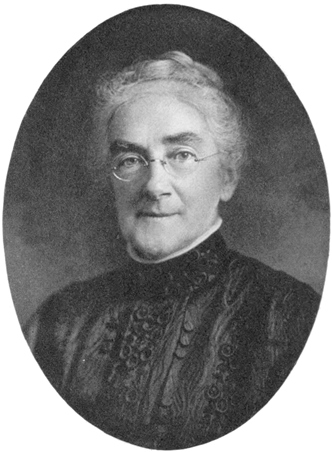 As geologist and science writer Nina Morgan discovers, romance blooms in mysterious ways.
As geologist and science writer Nina Morgan discovers, romance blooms in mysterious ways.
By all accounts, the chemist, environmental scientist and champion of women in science, Ellen Swallow Richards [1842 – 1911, picture], was an amazing scientific polymath. Born on a farm in Massachusetts, US, she studied at Vassar College in Poughkeepsie, New York where, in 1870, she became the first American woman to earn a chemistry degree.
In 1873 she went on to become the first woman to graduate from the Massachusetts Institute of Technology (MIT). Her ground-breaking work in sanitary engineering and experimental research in domestic science laid a foundation for the new science of home economics, including the application of chemistry to the study of nutrition. She also had a geological side.
Passionate about analytical and applied chemistry, she also carried out pioneering work in limnology – then a new field of study – with the aim of providing Boston with sufficient and healthy water supplies. The work involved collecting thousands of water samples in all weathers while perched on rocks or muddy stream banks – no mean feat for someone dressed in long heavy dresses and skirts. At the same time she also had to dodge all the slings and arrows of disapproval shot from the many who disapproved of a woman conducting this type of work. "If you keep your feathers well oiled" she countered, “the water of criticism will run off as from a duck's back."
No immunity
Although she vowed to dedicate her life to use scientific skills to "do real things of value to people" she was not totally immune to romance. Eventually she succumbed to the attentions of Robert Hallowell Richards [1844 – 1945], a mining engineer, metallurgist and professor of mineralogy and assaying at MIT. But not without a fight!
Like Ellen, Robert was also a scientific high-flyer. A graduate of MIT, he rose to the post of Professor of Mineralogy and Assaying at MIT in 1871 at the age of 27, then to head of the department of mining engineering in 1873 when he was just 29, and finally to Professor of Mineralogy in 1884. He is especially known for his expertise in ore dressing, particularly for his work in establishing the fundamental principles of sorting ore by means of jigs and machines. He also invented separators for a variety of different iron and copper ores and served as president of the American Institute of Mining Engineers in 1886.
Yes or no?
Worried that marriage would spell the end of her scientific career, Ellen initially spurned his advances. But Robert persisted and courted her for more than two years before finally convincing her that he was truly committed to both their scientific careers. Then, as he noted in his autobiography, "to my everlasting joy, she decided to accept my offer".
The wedding took place on 4 June 1875, with both partners exhibiting signs of nerves; he forgot to pack his wedding suit, and she forgot to bring the key to the new house they were about to move into. After the ceremony the couple went off on their honeymoon – a four-week field trip to mines in Nova Scotia, Canada – along with Robert's entire class of mining engineering students.
Mineralogical motives
Tramping through muddy mines in an ankle-length skirt and work boots accompanied by a large group of male students might not be everyone's idea of a romantic start to married life. But then Ellen may have had a mineralogical motive. Her thesis at Vassar had been on the chemical analysis of the amount of vanadium in ore iron. During the course of this she discovered an insoluble resident of the rare mineral samarskite, which was later determined to yield the elements samarium (Sm) and gadolinium (Gd). In 1879 she was recognized by the American Institute of Mining and Metallurgical Engineers as their first female member.
But whether due to shared scientific interests or true love, Ellen and Robert's relationship thrived. The couple remained dedicated both to their scientific work and to each other until her death in 1911. Clearly, a marriage of true minds.
Acknowledgements
Sources for this vignette include: The Remarkable Life and Career of Ellen Swallow Richards: Pioneer in Science and Technology by Pamela Curtis Swallow ISBN 978-1-118-92383-2; Wikipedia entries for Robert Hallowell Richards and Ellen Swallow Richards; and quotes by Ellen Swallow Richards on the website www.AZquotes.com.
* Nina Morgan is a geologist and science writer based near Oxford. Her latest book, The Geology of Oxford Gravestones, is available via www.gravestonegeology.uk